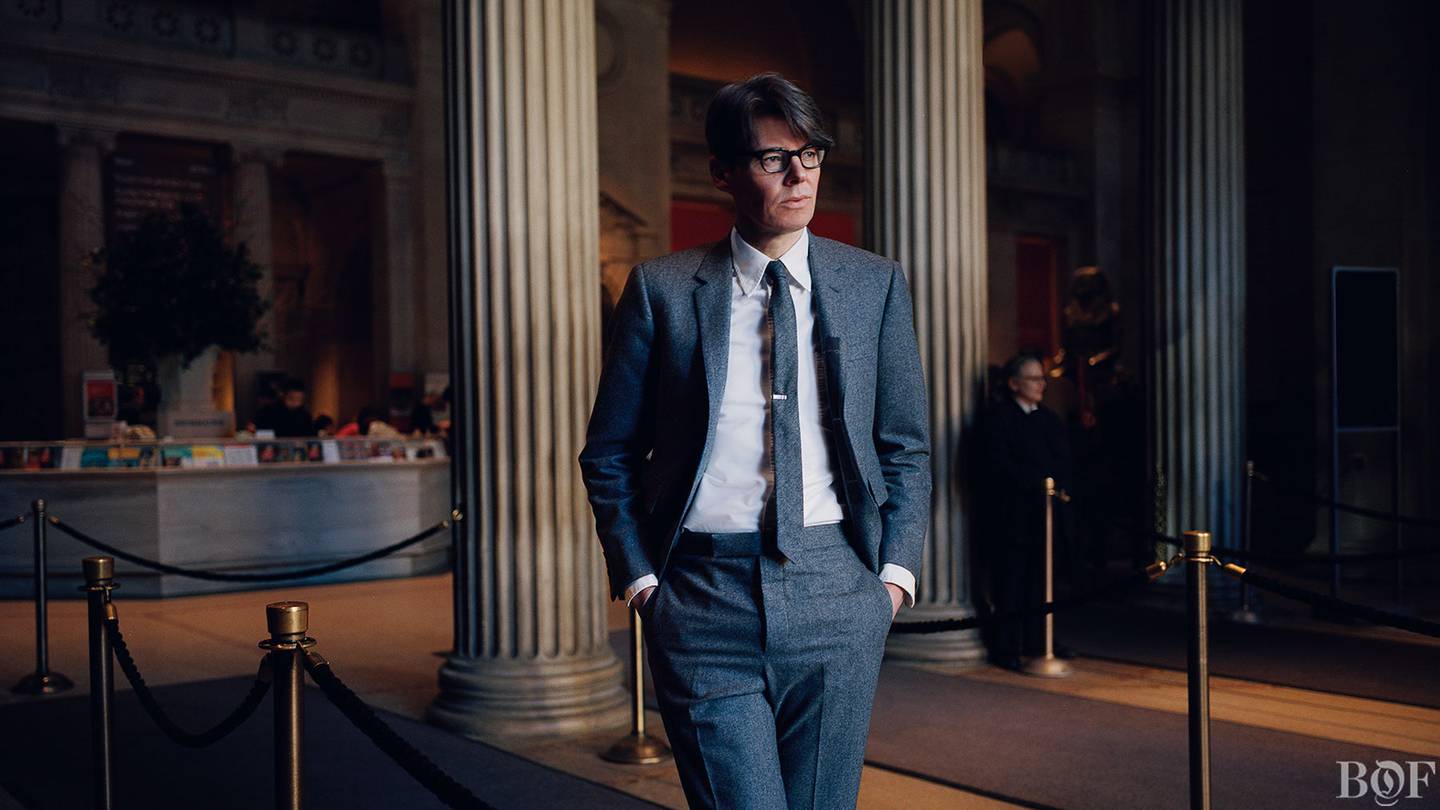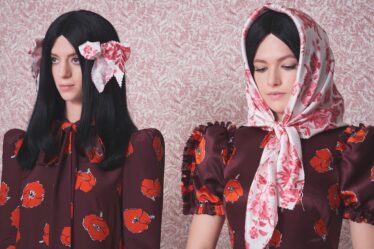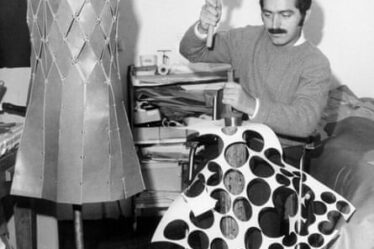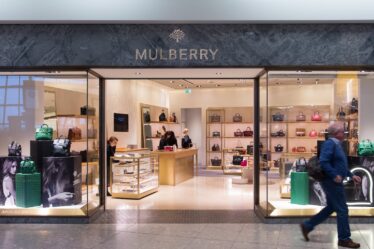
NEW YORK — Few people know this, but one of the most fabled collections in fashion history, Yves Saint Laurent’s infamous ‘Chinese’ collection from 1977, was inspired not so much by the most populous country in the world than by a scene in a film made in Hollywood by an Austrian-born director and starring a German actress as a British prostitute: Josef von Sternberg’s “Shanghai Express”.
Even Andrew Bolton, curator in The Costume Institute at New York’s Metropolitan Museum of Art, didn’t know this until a recent conversation with Pierre Bergé, Saint Laurent’s partner. But more than a juicy factoid for a self-confessed fashion nerd like Bolton, it was confirmation that he had chosen the right theme for his next big exhibit.
A yearly ritual that has become an institution in itself — drawing every important designer, model and actor in the business — it’s hardly a secret that Monday night’s Met Ball, hosted by American Vogue editor and Condé Nast artistic director Anna Wintour, and featuring one of the world’s glitziest red carpets, is more or less one gigantic ‘photo op’ with a noble cause: fundraising for the museum’s venerable Costume Institute. Still, it’s easy it forget that what Vogue calls the “party of the year” also marks the official unveiling the Institute’s annual fashion exhibition.
This year’s show, Through the Looking Glass, is devoted to China. But, as Bolton emphasizes, not just China, but an idea of China. “In a way, the show isn’t really about China but about a fantasy of China, one that is shared between the East and the West.”
“We always try to choose a subject that seems timely and to anticipate a trend or larger cultural phenomenon,” says Bolton. “Obviously, China is a huge market for fashion designers, but I also wanted to show the reciprocal relationship between the East and West that has always existed.” It’s a big theme, one with no shortage of political ramifications and issues, some of which have been raised in the build-up to the show.
Bolton is unperturbed. While he acknowledges the subject matter’s sprawling complexity, he says his agenda is simple, if not simple to articulate. He aims to deconstruct the traditional binary opposition that posits the West’s reception of Oriental influences as a mere copy and the East as invariably authentic. “I am hoping we will introduce a new way of looking at the relationship between the East and the West.”
Through moments of doubt over the year it’s taken to organise the exhibition, the debonair British curator — who says every show he has curated for the Institute (a total of thirteen, so far) has had a personal connection to him and has been, in some way, autobiographical — has stuck to his instincts, re-organising entire sections of the show up until the last minute, meaning the exhibition has evolved dramatically from inception to what visitors will soon see. “I was a huge procrastinator at college and it’s sort of gotten worse,” he reveals, in part due to his “paralysing” uncertainty about whether the show will be understood and well received by critics, and most importantly, the public.
The show isn’t really about China but about a fantasy of China, one that is shared between the East and the West.
Bolton has reason to be a little wary. Along with being the mastermind of one of the museum’s most successful fashion exhibitions of all time (2011’s Alexander McQueen: Savage Beauty, now at London’s Victoria & Albert Museum), he also curated and was enormously invested personally in Punk, Chaos to Couture (2013), which was received far less favourably. “It was disappointing for me. The narrow-minded, often preconceived response it generated made me throw up my arms and think ‘I just can’t win.'”
In truth, of course, Bolton has more than won, following an arc which took him from the countryside of northern England to the cultural epicentre of Manhattan’s Upper East Side, where he holds one of the most prestigious positions at the intersection of art, fashion and academia. Bolton, who recently won the Vilcek Foundation’s Prize for outstanding achievement, had what he calls an “normal middle-class upbringing” in a small town in Lancashire. If the place he came from was unremarkable, the era wasn’t. “English culture has always been rife with subcultural styles, but I was lucky to grow up during a time [the late 1970s and 1980s] that was particularly rich and saw this quick succession of different street styles connected to various music phenomena — punk, new romantics, grunge. It was extraordinary, you never had seen people dress like people did in the streets in those days.”
It was Bolton’s first exposure to fashion and it had an irrevocable effect on him. “That is when I understood the power of fashion to express identity and confront complex issues of gender, sexuality and even race. And it was galvanising. From then on I followed fashion immensely,” he says.
“I was too young to visit London at the time, but every month I absorbed it though the style magazines that were emerging at the time.” From the onset, Bolton’s interest in fashion always had an anthropological bent. “I didn’t particularly care about high fashion because I had no access to it, what fascinated me was the differences. How people put themselves together to express difference within circumscribed parameters.”
While he had fallen in love with fashion, he gave up early on on trying to use it as a means to express himself, instead assuming the role of a studious observer. “I was a very quiet, bookish boy. I always admired people I saw on the street who had the courage to dress differently and used fashion as a device to express personality and difference and to provoke reactions. But whenever I tried [using fashion the way the people I admired did], I could never pull it off. I always was so clean-cut, so preppy, that no matter what I did, what I experimented with wearing, it didn’t work; I wore it too self-consciously. So I embraced my inner nerd. ”
Still, Bolton never envisioned a career in fashion. “At that time there seemed to be so few possibilities for a career in fashion beyond being a designer or journalist. I never thought that one could take a scholarly path, it wasn’t an option.” If now-common academic fashion theory and history programs exist at the time, he wasn’t aware of them. Bolton decided to study anthropology. “I was so impressed by the similarities that existed between cultures, across geographical frontiers.” (He later got a master’s degree in non-Western art).
His background in anthropology, along with the lens of art history and literature, informs his curatorial approach to this date and Bolton has repeatedly evinced an attraction to large social themes like gender, death, race and nationhood. “I think fashion is a good platform to address those issues.”
Andrew Bolton | Photo: Kevin Trageser for BoF
Bolton’s first proper curatorial position was at the at London’s Victoria & Albert Museum. “[There] I learnt to appreciate the aesthetics of objects and take them out of context and appreciate the formalistic qualities in their own right, stripped of cultural baggage and meaning. It was freeing and has helped me subsequently because I think the role of a curator is very much about creating a balance between aesthetics and context and providing information that gains access to an object both sociologically and culturally but also aesthetically. ”
The fact that he oversees the fashion department of a major art museum distinguishes his job from that of curators at fashion museums. “My responsibility is three-fold. Our role is to record the history of fashion through innovations in technique and construction, but also to document cultural trends as they are happening,” he says. “But working within an art museum, we also have to promote the artistry of fashion, encourage new ways of thinking about fashion and expand its parameters.”
Bolton uses his latest exhibit to illustrate the genesis of a show through its various stages, which, together, can take about 9 months to a year. (The lead time is shorter than what other museum departments spend preparing a show, but it gives him the chance to be more responsive to current events in the real world, Bolton says.)
“First we come up with a general theme.” In the case of Through the Looking Glass, Bolton says the initial kernel came from a book on the way representations of China in cinema have informed the West’s relationship to the country. “The way China is depicted in films is very seductive and has had a huge influence on fashion designers, who look at and quote these representations. What I found fascinating is that it’s a view of China that is one, or actually many, steps removed from reality. That was my jumping-off point.”
Objects play a crucial role in narrowing down the broad topic and keeping it manageable and focused. “Once I have the over-arching theme for an exhibition, I start a storyboard and pull a huge amount of images — of fashions as well as Chinese art objects — and try to tease out stories. One of the roles of a curator is being a storyteller and I am lucky because every fashion, every item of clothing has a story to tell. My job is to articulate these stories to a wider audience.”
As Bolton tells it, developing the exhibition is a process of constant refining, eliminating though natural selection (“the strongest objects shout out to you, making the lesser ones automatically fall away”) and incessant questioning. “It’s like coming up with the chapters of a book, ‘how are these influences manifested in fashion,’ ‘what are the main inspirations designers look to,’ etcetera, and then finding sub-themes within those chapters. I always let the objects tell the story, I just weave them together into themes that are intelligible to the visitor.”
While many items of clothing that are displayed in its exhibitions are loans from other museums and private collections, the Costume Institute also maintains one of the biggest fashion collections in the world, making the acquisition of new additions to the collection a big part of Bolton’s job. Fashion curators like to buy pieces straight from the runway “because those samples express most purely the designer’s creative vision expression, which is often diluted by the time the garment reaches stores.”
Surprisingly, Bolton reveals that because more and more designers are choosing to keep their own archives (a consequence of brands’ increased image control and of designers’ increased preoccupation with their legacy), and because of increased competition between museums (“it’s incredibly competitive and often curators are competing for the same pieces”) Bolton says it’s getting harder and harder to acquire contemporary fashion. “Today, it is easier to acquire historical fashions than it is to collect contemporary fashions.” Yet, for the Costume Institute to keep its edge, sometimes it’s paramount to get a certain item from a standout new collection. “We’re very circumspect, but we also have to be immediate, because if you don’t get a Comme des Garçons from this season, it could be lost forever.”
Unlike other museum curators, thanks to Anna Wintour, one thing Bolton doesn’t have to worry about is finding corporate partners to underwrite the Costume Institute’s increasingly costly exhibits. “Anna is a huge supporter and patron of our department and has secured the sponsorship for every exhibition we’ve done [since he joined, in 2002],” Bolton says. “It allows me to focus on the exhibition and also keeps my role very clear and very untainted from the commercial aspects of sponsorship.”
In the end, the story he tells, and the way it’s delivered, have to be focused, compelling, and, crucially, new. The general public’s rising virtual omniscience — a by-product of the digital age — has raised the stakes of his job. “In a way, the role of a curator has become harder,” he says, ”because with the Internet, visitors come in with a much stronger understanding and appreciation of fashion. So, in order to keep their interest, I have to present that fashion in a way that is novel, interesting, challenging, provocative and confrontational.”
But as the profile of the department he oversees (alongside curator-in-charge Harold Koda) has risen within the museum (it recently unveiled renovated galleries and an expanded study and storage facility), Bolton is confident about the Institute’s — and fashion’s — prospects. “Other departments are now seeing the power of fashion to bring in visitors. Fashion is one of the most accessible and democratic art forms, transcending all art forms as a living medium that can address issues of race and nationality and the idea of stereotype that this exhibition confronts quite head-on.”



